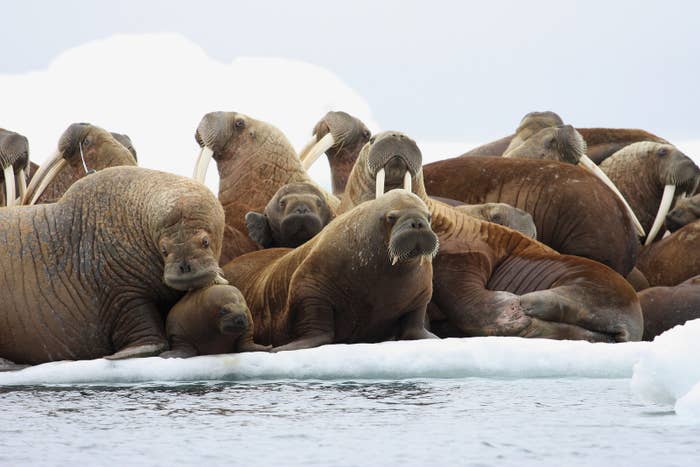
The Arctic continues to warm at a record-setting pace, depleting greater amounts of sea ice and dramatically changing habitat for polar wildlife in the process, researchers warned Tuesday.
According to the annual Arctic Report Card released by the National Oceanic and Atmospheric Administration (NOAA), average annual air temperature over land areas between October 2014 and September 2015 was 2.3 degrees Fahrenheit (1.3 degrees Celsius) above average, the highest since observations began in 1900.
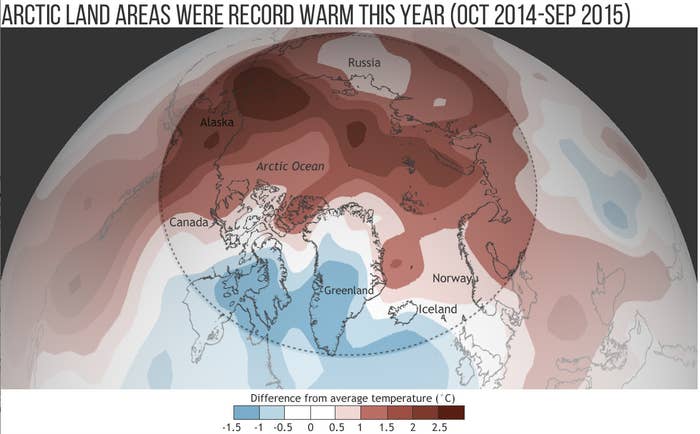
"The Arctic is warming twice as fast as other parts of the planet, which has ramifications for global security, climate, commerce, and trade," said NOAA Chief Scientist Rick Spinrad at a news conference Tuesday. "This year’s report shows the importance of international collaboration on sustained, long-term observing programs that provide insights to inform decisions by citizens, policymakers, and industry."
NOAA, however, has recently come under attack from climate change skeptics, who have accused the agency of altering temperature data to fit a global warming narrative.
But scientists say the evidence that rising temperatures is having a greater affect on the environment is incontrovertible.
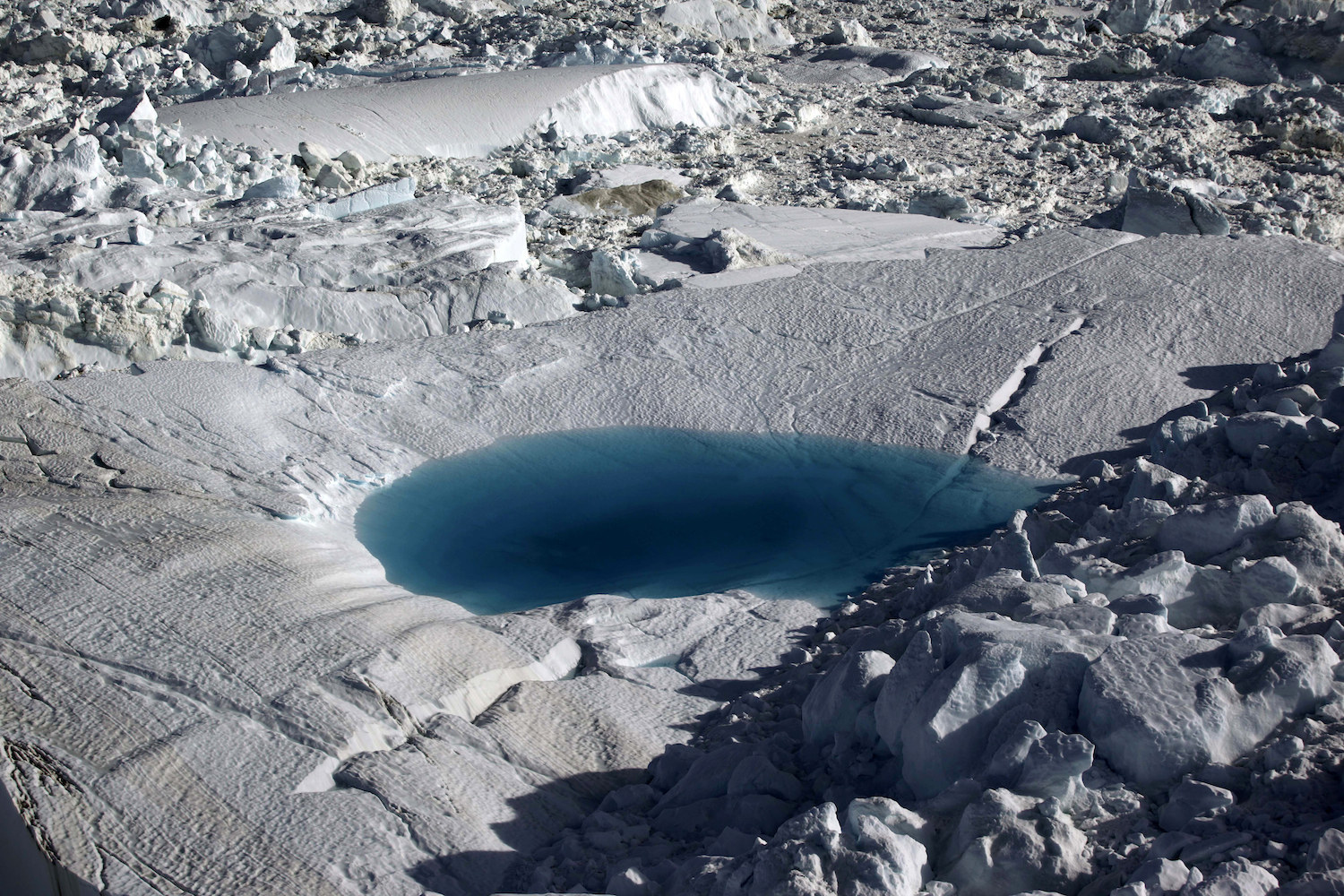
The report notes that the extent of sea ice at its winter maximum in 2015 was the smallest on record, creating challenging conditions for walruses that use floating ice for mating, giving birth, seeking shelter from storms and predators. The summer extent of sea ice was the fourth smallest on record, NOAA reported.
The retreating sea ice has, in recent years, forced thousands of walrus to "haul out" onto land in northwest Alaska, far from their hunting grounds, in order to rest. That, in turn, creates dangerous and challenging conditions for calves that must swim farther to feed.

New, younger ice now dominates the winter ice cover, comprising about 70% of the March 2015 pack, NOAA reported, compared to about half that in the 1980s, when older, thicker ice was more prevalent and less vulnerable to melting in the summer.
As the ice retreats, more of the Arctic Ocean exposed to the atmosphere for longer periods of time, increasing its temperature.
For example, the Chukchi Sea northwest of Alaska and eastern Baffin Bay off west Greenland warmed nearly 1 degree Fahrenheit per decade since 1982 (0.5 degrees Celsius), NOAA reported.
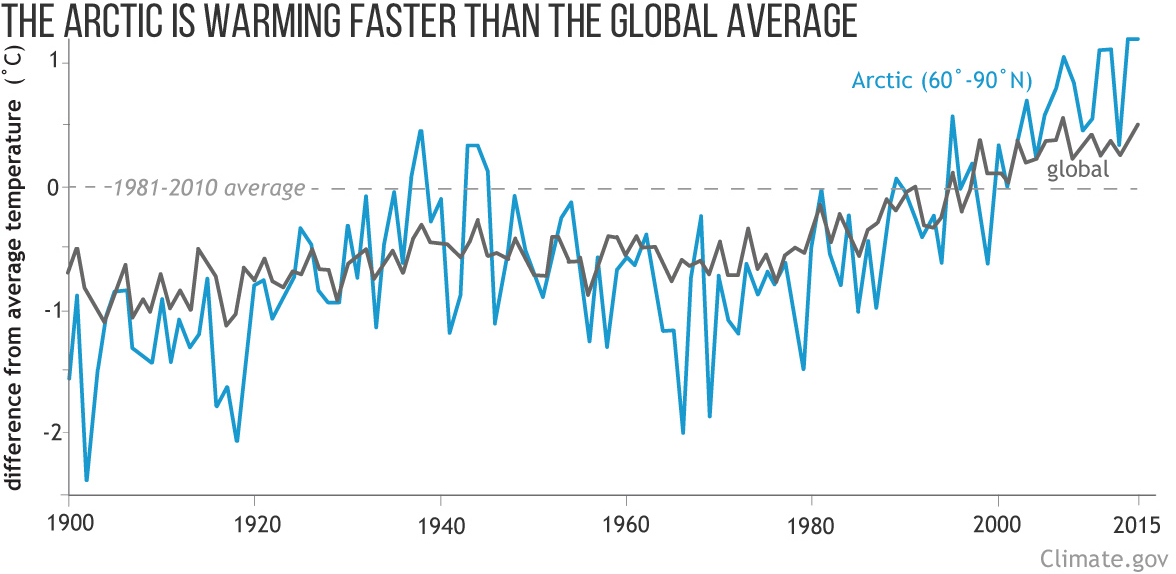
The same effects can be seen on land, where scientists say June snow cover in the North American and Eurasian regions of the Arctic was at the second-lowest level since records began in 1967. With less snow cover, more sunlight is absorbed by the land, also contributing to warmer conditions.
Since 1979, the extent of summer snow cover has been dropping by 18% per decade, the study stated.
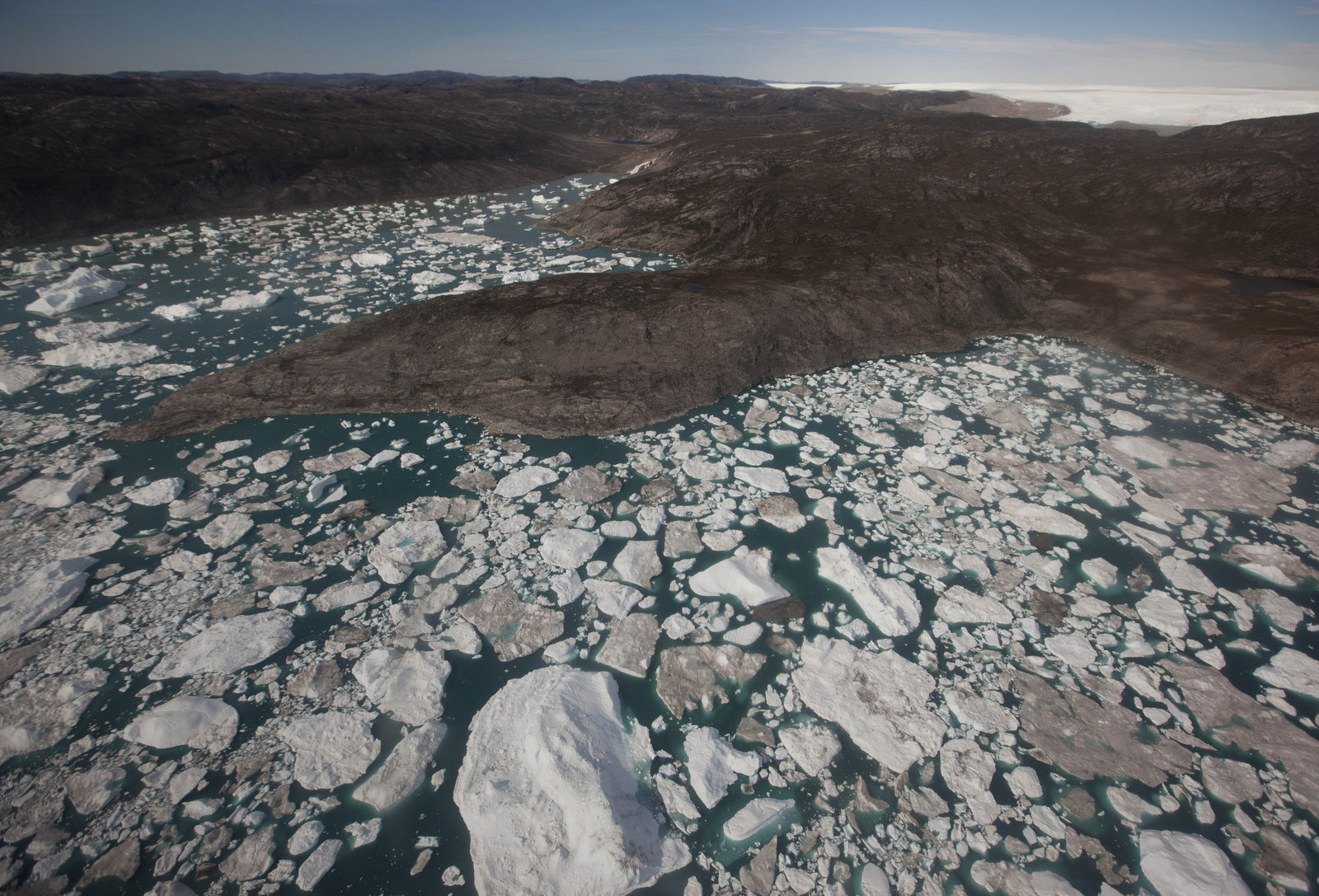
Another effect of the retreating sea ice: more sunlight is hitting the upper layers of the ocean, stimulating the growth of algae, an important cornerstone of the food chain. Huge blooms of phytoplankton — an important source of food for whales, shrimp, snails, and jellyfish — were observed in 2015 along the edge of the Arctic continental shelf.
Some 70 authors from 11 nations contributed to the annual Arctic Report Card, which is now in its 10th year and on the heels of world leaders reaching a historic agreement in Paris that was designed to halt human-caused climate change.
